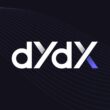Emergence of Tokenized Funds in Legacy Financial Institutions
The increasing popularity of tokenizing traditional assets has not gone unnoticed by established financial institutions. In a recent analysis conducted by Moody’s, a renowned firm specializing in investment risk assessment, it was revealed that the value of tokenized funds has skyrocketed from $100 million in early 2023 to an estimated $800 million presently. This surge has been primarily fueled by the growing tokenization of U.S. treasuries.
Moody’s report highlighted the integration of a variety of assets into both public and private blockchains. Noteworthy examples include Franklin Templeton’s U.S. Government Money Fund expanding its presence from Stellar to Polygon, Backed Finance launching a tokenized short-term U.S. treasury bond exchange-traded fund (ETF), and UBS Asset Management rolling out a tokenized money market fund (MMF) on the Ethereum blockchain. According to Moody’s, tokenizing MMFs holds the potential to combine their stability with the technological perks of stablecoins.
- Investors are increasingly turning to tokenized funds due to their ability to enhance market liquidity, accessibility, reduce costs, and enable fractionalization.
- Tokenized assets hold promise in shortening settlement times, automating processes through smart contracts, and enhancing transparency in the financial ecosystem.
“The rise of tokenized funds is a testament to the evolving landscape of financial markets, where the integration of blockchain technology is reshaping traditional asset management practices,” – Moody’s analysis.
Challenges and Opportunities in the Tokenization Sector
Despite the optimism surrounding the tokenization of traditional assets, Moody’s report also flagged various risks associated with this burgeoning sector. Potential challenges include technological disruptions faced by tokenization service providers, compliance with regulatory frameworks, and the management intricacies of tokenized funds.
The report underscored the importance of expertise in aspects such as token issuance, investor records management on-chain, and adhering to regulatory measures like know-your-customer (KYC) and anti-money laundering (AML) checks. These requirements may present hurdles for fund managers and administrators venturing into the tokenization space.
Additionally, Moody’s highlighted the technological vulnerabilities inherent in tokenized assets on public blockchains, including cybersecurity vulnerabilities and governance issues.
“To navigate the evolving landscape of tokenized funds successfully, stakeholders must prioritize regulatory compliance, technological resilience, and investor protection,” – Moody’s analysis.
















